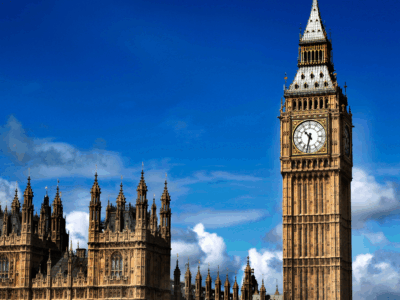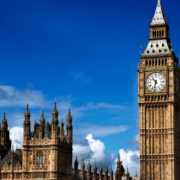The Labour Government has unveiled a £39 billion commitment to build and upgrade social and affordable housing over the next decade, marking one of the most significant state interventions in the housing market since the post-war era.
Described by ministers as a “once-in-a-generation opportunity”, the announcement aims to deliver up to 1.5 million new homes through councils, housing associations, and registered providers (RPs). But while the ambition is grand, the rollout is already exposing mounting tension between the social housing agenda and the increasingly beleaguered private rented sector (PRS).
With new renters entering the market, rising demand, and further legislation on the horizon, landlords are asking: Are we part of the long-term plan—or being priced and regulated out of it?
Hotel Closures Shift Pressure to PRS
One of the most headline-grabbing measures is the planned closure of all asylum-seeker hotels. Individuals granted the right to remain will now be expected to find housing via the PRS.
This policy shift adds thousands more households to an already under-pressure rental system. However, PRS supply is moving in the opposite direction: landlord numbers are falling, rents are rising, and regulatory burdens are intensifying.
Crucially, this policy assumes that PRS landlords will absorb these new tenants, without offering meaningful incentives, guarantees, or additional support. With costs rising—from capital upgrades to EPC compliance—this expectation may be dangerously optimistic.
Vagrancy Law Repealed: What Now?
As part of broader housing reforms, the Government is also repealing the 200-year-old Vagrancy Act, decriminalising rough sleeping. While widely welcomed by campaigners, this move implies a larger responsibility for local councils and landlords to accommodate vulnerable people.
But the question remains: where will they go? Emergency housing stock is limited, councils are stretched, and parts of the PRS are already under strain.
Social Housing Boost Faces Practical Barriers
Despite the record-breaking investment, delivery in the social housing sector faces serious challenges:
- Repairs backlogs and maintenance failures in housing association stock remain widespread
- Awaab’s Law, due possibly in October 2025, will introduce strict new timeframes for tackling damp and mould
- Local Housing Allowance (LHA) remains frozen, reducing affordability for low-income renters
- Council tax rises are increasingly likely, as local authorities seek to fill funding gaps
Even with new capital commitments, some housing experts warn the sector lacks the delivery capacity and resilience needed to scale at speed. Investor confidence in the RP model has also taken a hit, following high-profile failures and governance concerns.
Regional Infrastructure Could Drive Rental Demand
Amid the challenges, opportunities remain—particularly around infrastructure-led regional growth. Strategic landlords are already tracking developments that may boost rental demand, including:
- Oxford–Cambridge Arc: long-term housing and transport corridor
- Lower Thames Crossing: a key link between Essex and Kent
- Sizewell C Nuclear Power Station: major construction workforce demand in Suffolk
- Hospital and school upgrades: part of the Government’s public services overhaul
These projects are expected to generate employment-driven demand for rental accommodation, particularly in regions traditionally underserved by institutional landlords.
Is the PRS Being Marginalised?
The Government appears to be leaning heavily on the PRS to support its wider housing goals—including absorbing new migrants, key workers, low-income households, and those priced out of ownership. Yet landlords report a widening gap between the expectations placed upon them and the support they receive.
While social housing and first-time buyers receive direct state funding, PRS landlords must navigate increasing regulation, higher interest rates, and reduced tax relief—all while shouldering the risks of complex tenancies.
The upcoming Renters’ Rights Bill—with its abolition of Section 21 and enhanced tenant protections—may improve standards in theory, but many landlords see it as another blow to their autonomy, especially in cases involving antisocial behaviour or unpaid rent.
Landlords across the UK continue to voice frustration that, despite providing housing for over 20% of UK households, they receive little formal recognition in national housing strategy.
What Could Support Look Like?
For a balanced housing market, policymakers will need to include PRS landlords in the long-term plan. Potential interventions could include:
- Capital gains rollover relief for reinvestment into rental property
- Grants or tax offsets to help meet EPC and Decent Homes requirements
- Fast-track tribunals for possession disputes under the new Section 8 regime
- Digital tools for simplified licensing, compliance, and landlord registration
- Dialogue with industry bodies to improve regulation design and enforceability
Without these kinds of reforms, further attrition from the PRS seems inevitable—just as demand peaks.
Final Thoughts
The £39 billion social housing programme is a bold, necessary investment in the UK’s long-neglected affordable housing infrastructure. But without a parallel commitment to the viability of the private rented sector, it risks deepening existing imbalances.
Landlords and letting agents remain a critical part of the UK’s housing landscape. Ignoring their challenges now could severely limit the success of broader housing policy goals.
The solution is not binary. Both social housing and the PRS must be supported, modernised, and sustained. One cannot flourish while the other withers.
Staying up to date is more crucial than ever. Events like the National Landlord Investment Show focused on free expert knowledge and education to help UK landlords and property investors stay ahead of the evolving private rented sector. Register for your free ticket for the upcoming show on July 9th in London, Old Billingsgate here.
For the latest updates on landlord legislation, housing policy, and market analysis, stay tuned to Property Notify.
Photograph: Maja Smiejkowska/Reuters

























Comments